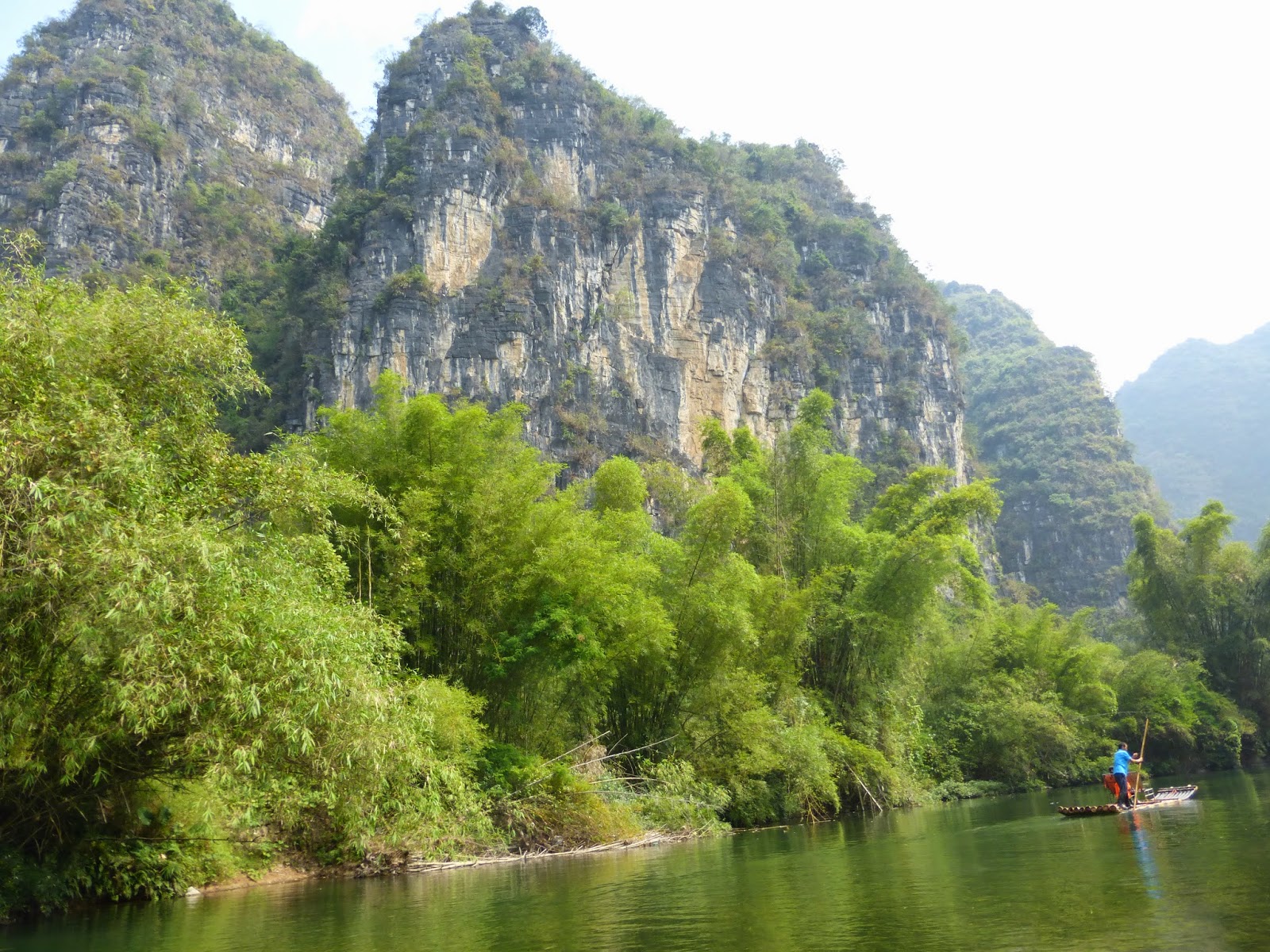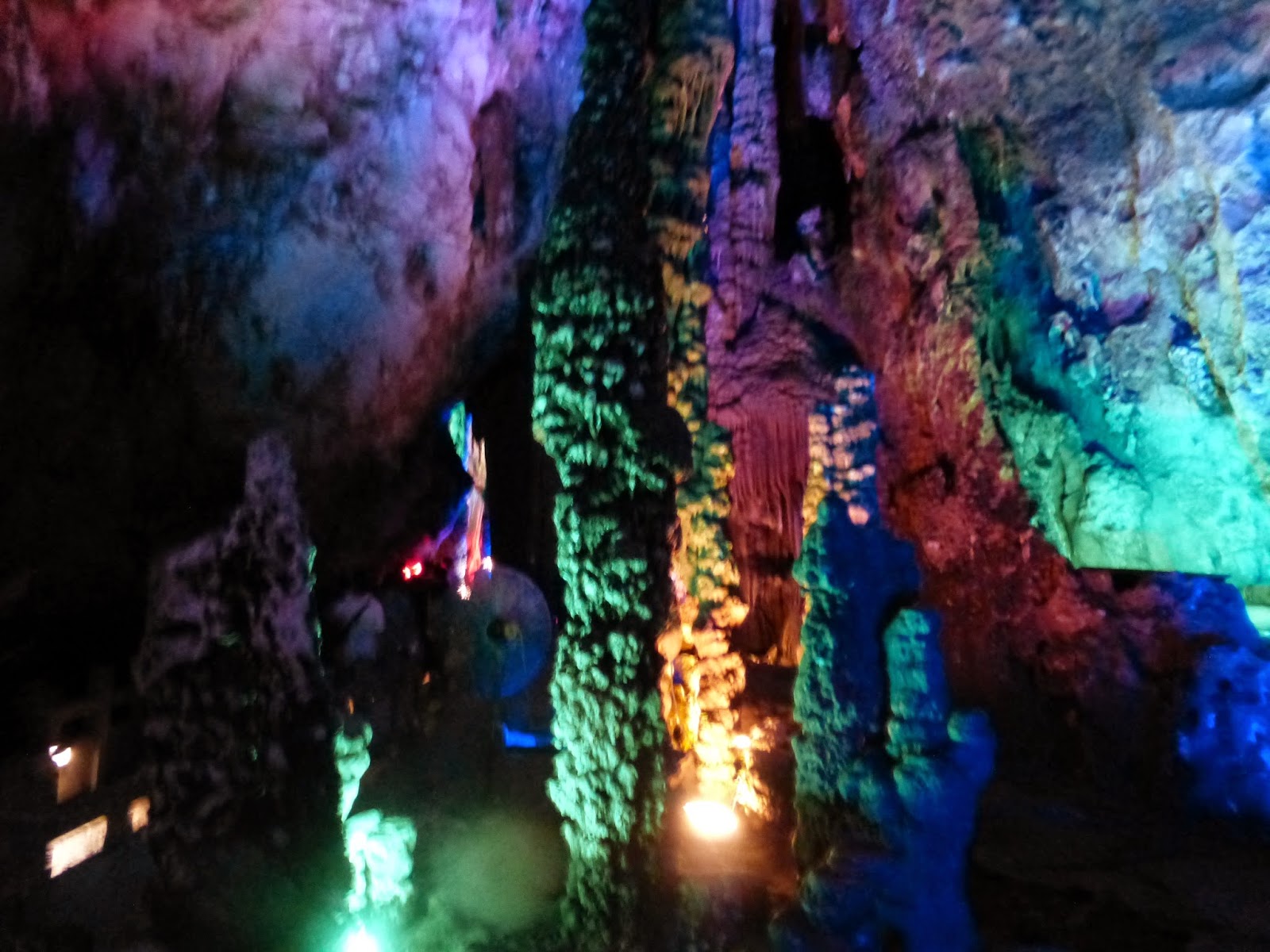Greetings from China! Since Hong Kong is near a variety of
interesting places, we’ve decided to put the location to use and take a trip.
The vacation is an epic four-stop journey through a wide range of Chinese environments.
I’ll describe the locations individually, one in each post.
P.S.: This also means that the mini-series is going on
sabbatical. Sorry!
Stop One:
Yangshuo!
Yangshuo is a countryside town near the larger city Guilin.
It is thoroughly unique for its karst (flat plains with sheer limestone
towers). Karst only exists in a few places in the world, and it is at its most
noticeable in Yangshuo. It is almost impossible to describe, so look at the
picture below if you want the full effect.
 |
| Despite how amazing it is, this picture was actually taken by us! |
On our first day, we bicycled through the beautiful
countryside, swerving in and out of the karst cliffs. We eventually brought our
bikes to a halt at a river. There, we were able to pay a man with a long bamboo
pole to carry us serenely down the river on a bamboo raft. He pushed us along by
launching off the bottom of the water with his long pole. Oh, and he hocked up
about fourteen loogies.
I’ll stop there to explain something. The snort-spit, or
“hocking up a loogie” where one gathers up mucus with a disgusting sound and
then expels it, is a common habit in China. In fact, it’s hardly even considered
rude and gross. Unfortunately for us, this means hearing a chorus of loogies
wherever we go.
Still, the cruise was unique and enjoyable. A few times, we
rode the raft down miniature waterfalls. That was where the bamboo style of the
raft came in handy- any accumulated water on the boat seeped through the cracks
instantly, letting us enjoy the rest of the peaceful drift.
Moving on: our second day was spent hiking and spelunking.
Here’s the summary:
The aforementioned hike was up to the Moon Gate, a giant,
half moon-shaped hole in a tall karst mountain. The gate was incredible-
stalactites hung from the vast ceiling, the rock stretching seemingly endlessly
above us. The hike up, however, was not as fun.
Extremely little of the “hike” was what I would call a
proper hike. Instead, we had to climb hundreds of stairs up to the top. It left
me emotionally scarred. I can’t bear to talk about it anymore. *sniff*
 |
| This is what a hike of a few hundred steps does to a person. About 693 steps, to be precise. But who’s counting? |
 |
| The Moon Gate. |
The tour of the cave was the real highlight. The cave we
visited is called Silver Cave. It allegedly brings wealth to whoever enters. To
us, however, it brought an amazing tour.
The cave is lit with multicolored lights, accentuating the
already fantastic rock formations to the point of surreal beauty. It looks like
something one might find in a video game. Just like the karst, I doubt words
will do it justice, so I’ll cut to the slideshow and stop making you listen to
me.
 |
| The reflection in the underground lake gives the impression of an abyss. |
 |
| Oddly translated sign. |
Thanks for reading!
Bonus: Aidan’s
Mandarin Lessons, Episode One!
Greetings, loyal followers! If any of you care, I’ve started
a new service specially for my blog readers- Mandarin lessons! If you’re
interested, I’ll pass on my skills from Mandarin classes to you!
First lesson: tones. Mandarin has four tones that are
crucial to pronunciation. Different tones can change the meaning of a word, so
getting them right is very helpful.
Note: In pīnyīn (Mandarin written in English characters)
tones can be found written above vowels.
Here are the four tones, written above the word “ma”:
Tone one: mā
This tone does not change throughout the word- the word will
be all one note. It will also be a higher note that normal, almost as if you
are singing. Don’t worry, it will sound more normal when grouped with other
words.
Tone two: má
This is the rising tone. The pitch goes up as you say the
word, like you’re asking a question.
Tone three: mǎ
This one is tricky, but common. Like the symbol, the pitch
of your voice should go down and then up as you say the word. It’s okay if it
takes a little longer to say than the other tones.
Tone four: mà
This, like the symbol implies, is the falling tone. Words
with this tone should be quick and aggressive.
Technically, there is a fifth tone, but it’s just “no tone”.
To wrap up, here are a few common phrases to get you
started:
Hello: nǐ hǎo
Goodbye: zài jiàn (pronounced “zai chien”)
Sorry: Duì bù qǐ (pronounced “dway boo chee”)
Yes: Shì (prounounced “shuh”)
No: Bù
That’s all for now! Tune in next time for more Mandarin!








No comments:
Post a Comment